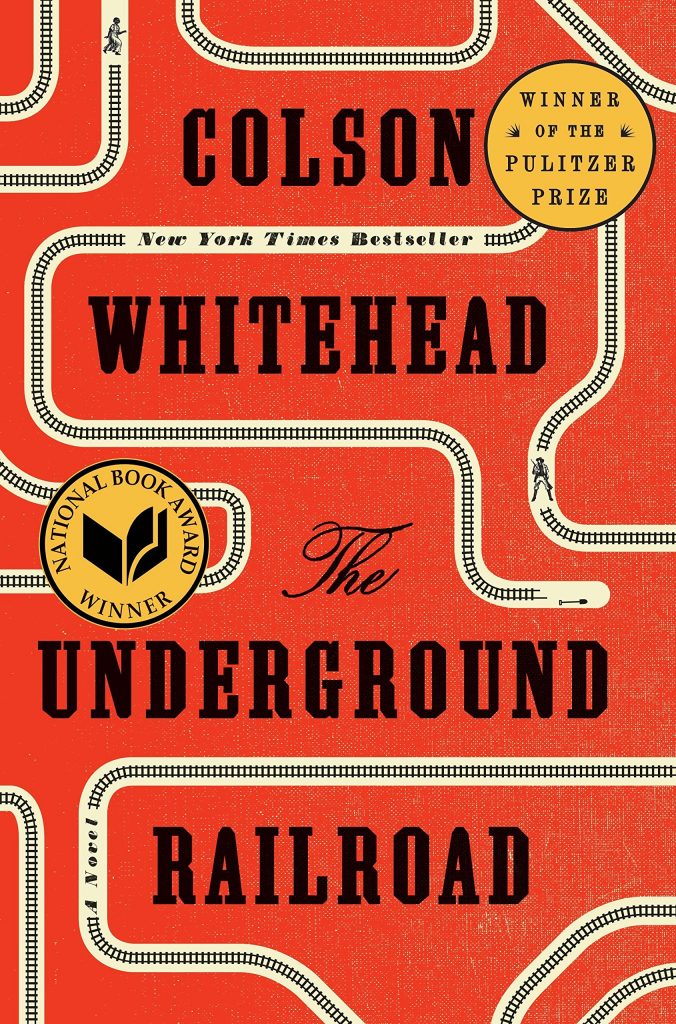Colson Whitehead’s award winning The Underground Railroad is a fast-paced adventure which follows an enslaved girl, Cora, on her bid for freedom from her brutal plantation in the deep-South. The 2017 Pulitzer Prize winner cements its place as a modern classic by merging slave testimonies with a realistic imagining of the ‘underground railroad’, which results in a dramatic historical fiction novel set in mid-1800s America.

This thrilling tale of escape and oppression begins with Cora, our protagonist, recounting the story of her grandmother, Ajarry, and how she came to Georgia in the eighteenth-century as part of the infamous ‘slave triangle’. Kidnapped from Benin, she was shipped out of the Port of Ouidah and onto The Nanny, a vessel that began its journey in Liverpool and traded its cargo of rum and gunpowder for people. The ship then made its way to South Carolina, where slaves were sold in huge auctions to plantation owners. Ajarry was bought for $226, and began the long march South to her new reality working on the land with cotton in Georgia. After being bought and sold several times, her final plantation was Randall, where we find Cora residing at the start of the novel. Ajarry’s daughter, Mabel, Cora’s mother, escaped the farm, a tale that unfolds throughout, and with which Cora grapples as she embarks on doing the same.
Although fiction, The Underground Railroad has its roots in real life events. The title refers to the network of abolitionists that defied the law to assist slaves escape their Southern plantations for a free life in the North throughout the eighteenth and nineteenth centuries. One of the most notable individuals of this underground initiative of resistance was Harriet Tubman. She was born into slavery around the time of Colson’s novel, and managed to escape. However, she was forced to leave her family behind, and endeavoured to return and assist them to freedom also. Tubman is famous as she risked life and limb to save, not just her family, but also dozens of other enslaved people, by making a total of thirteen trips throughout the mid-nineteenth century. The Underground Railroad takes this network of resistance, and reimagines it as a literal railroad, not just a metaphorical one, built underground in tunnels, accessed only by concealed trapdoors, on which slaves were smuggled by abolitionists to the free North in carriages. ‘Station agents’ are deployed to take charge of any runaways and ensure their passage to the next stop on the railroad. On Cora’s first encounter with a station agent, ‘Lumbly’, she remarked on the sheer scale of the tunnel, and asked who built it, to which he replied: ‘“Who builds anything in this country?”’ (p. 81)
Colson reminds us of the brutal reality that lies beneath his tale, as in between each chapter are examples of ‘wanted’ posters produced in the event of an escaped slave. For example:
25 DOLLARS REWARD
RAN AWAY from the subscriber on the 6th of February last, his Negro Girl PEGGY. She is about 16 years of age, and is a bright mulatto, about the ordinary height, with straight hair and tolerable good features-she has a ragged scar on her neck occasioned by a burn. She will no doubt attempt to pass for a free girl, and it is likely she has obtained a free pass. She has a down look when spoken to, and not remarkably intelligent. She speaks quick, with a shrill voice.
JOHN DARK.
CHATHAM COUNTY, MAY 17 (p. 238).
Colson’s honest portrayal of an important part of our recent history brings to life the reality of the slave trade, from the perspective of those who experienced its most brutal aspects. He makes us fall in love with Cora, with her razor-sharp quick wit, no-nonsense language, and creates a huge sense of empathy as her journey North takes many twists and turns. This contrasts greatly to the brutish slave catchers pursuing her for a hefty reward. Gangs of patrollers would travel great distances to bring back any runaways, taking great pleasure in treating them as harshly as possible before cashing in on their prize. As stated on p. 90: ‘News of a runaway sent them into cheerful activity.’ Ridgeway is Colson’s villain who sets about hunting Cora to claim the reward on her head. Following in his father’s footsteps, he worked in the retrieval business, often travelling to cities such as New York to ‘hunt’ (p. 93). However, Ridgeway was not always successful. Cora’s mother Mabel had eluded him, and this ‘nagged at him longer than it should have…Impossible as it seemed, the underground railroad had a spur in Georgia. He would find it. He would destroy it.’ Resolute on returning her to Randall, Colson also follows Ridgeway’s quest to find Cora on her path to liberty.
The Underground Railroad isn’t solely for those interested in history. Colson’s story-telling prowess takes you on an intense journey through the deep-South, through the eyes of prominent, well-constructed characters. His brutal honesty in recounting Cora’s experience of slavery urges the reader to invest in her quest for survival. In contrast, his portrayal of the plantation owners and slave catchers presents the villains of the tale, resulting in a battle of good and evil. This fast-paced novel is essential reading for anyone who enjoys fiction that is rooted in truth.
Discover The Underground Railroad for yourself in the Reading Zone, David Wilson Library, on the Ground Floor, 813.54 WHI.
Further Reading/Listening
R. Blackett, ‘The Underground Railroad and the Struggle against Slavery’, History Workshop Journal, 78 (2014), pp. 275-86.
Jean M. Humez, Harriet Tubman: The Life and the Life Stories (Madison: University of Wisconsin Press, 2003).
G. Jenner (host), ‘Harriet Tubman’, You’re Dead To Me, BBC Sounds, 13 September 2019. https://www.bbc.co.uk/programmes/p07n8pqw
Written by Dr. Cara Dobbing
@Caradobbing